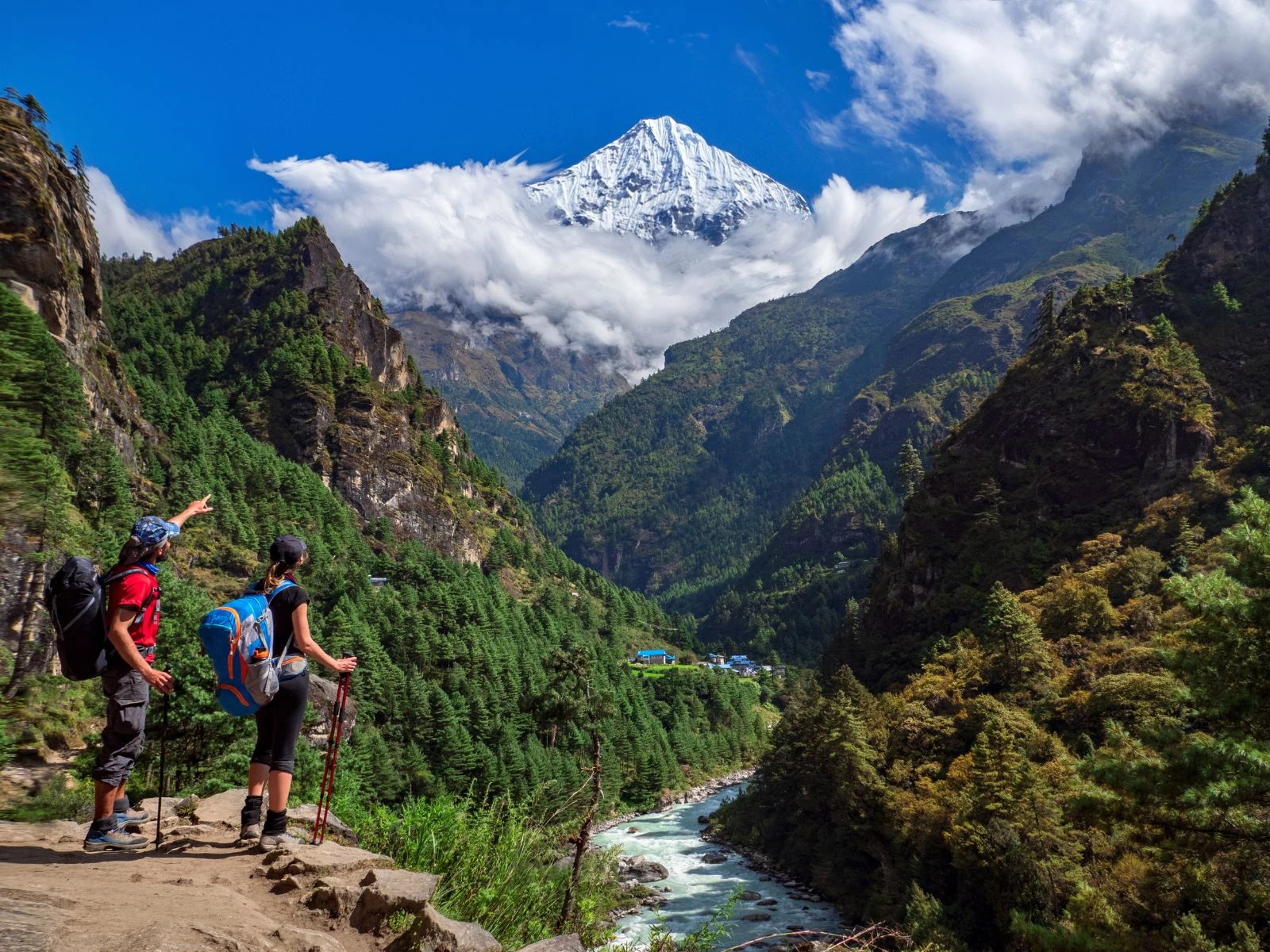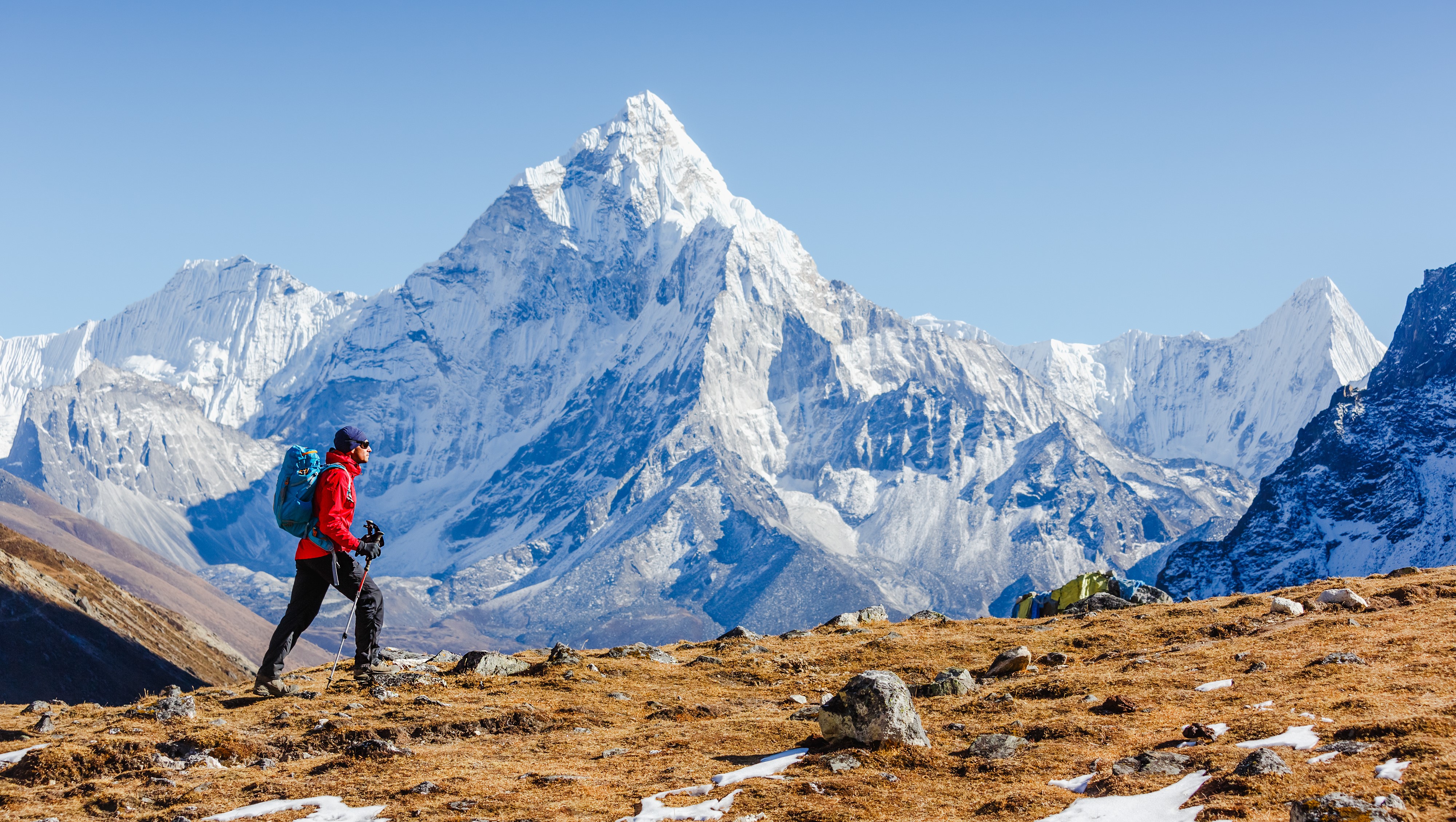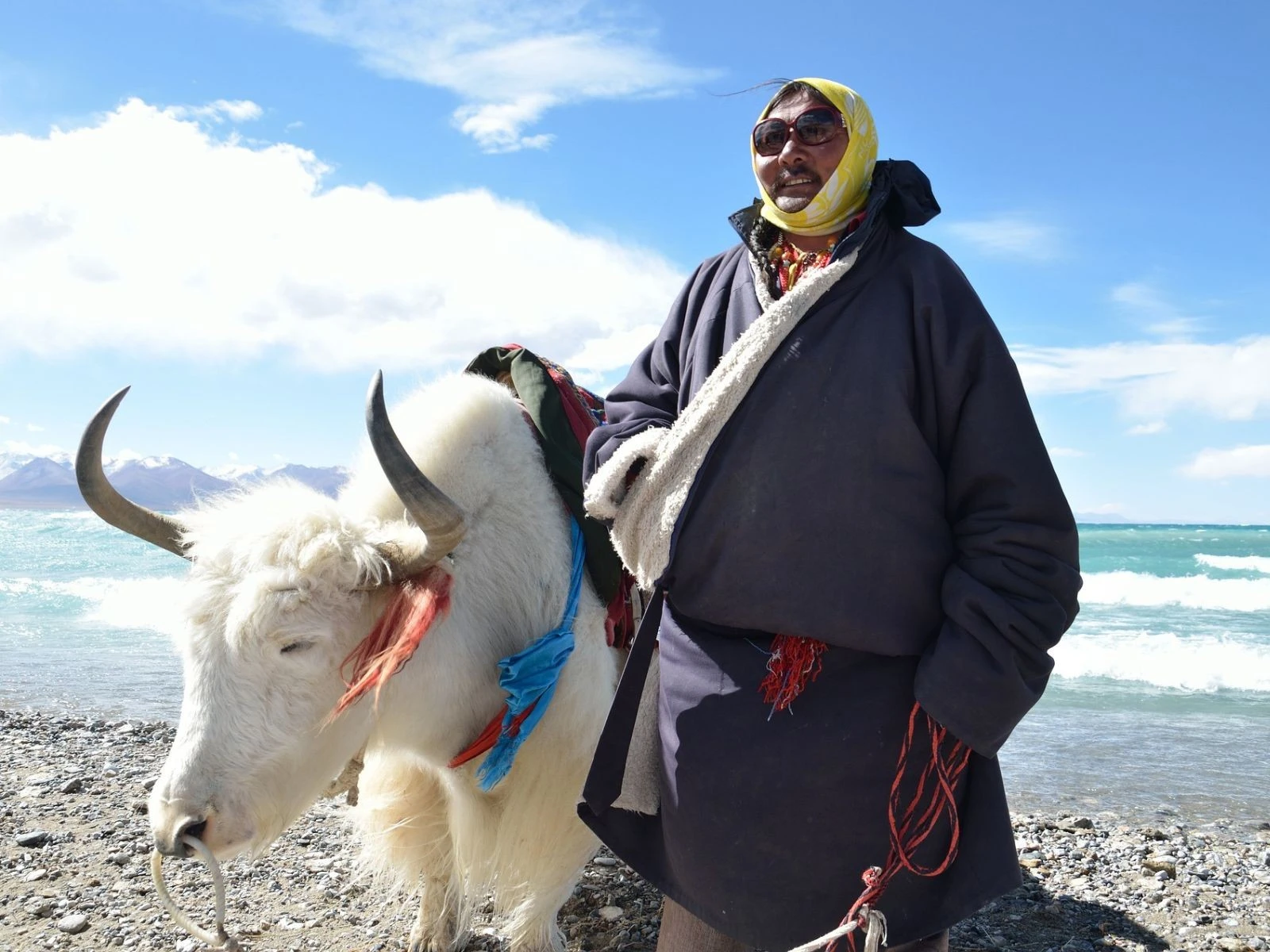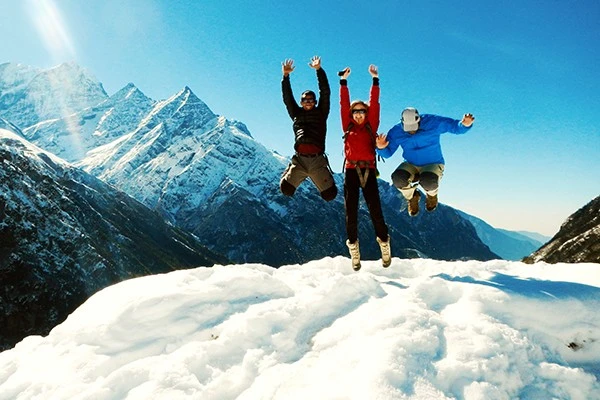
For most of the Himalayan regions, Spring is one of the best times to trek. Spring season is from the start of March to around mid May, depending on routes. Trek at this time of year and you can expect clear skies (maybe the occasional shower), warm comfortable temperatures and a vibrant landscape cloaked in colourful blossoms of wildflowers and reds and pinks of rhododendrons (Nepal’s national flower). It’s a wonderful time to visit and great trekking conditions. The next best time to trek, across most of the Himalayan regions, is in Autumn from early October to end of November into early December and (on some routes) into January. At that time the trails tend to be a little quieter (much moreso at the end of the season, in December and January) and you’ll have crisp clear weather with comfortable daytime temperatures and a little chilly in early mornings or late evenings and overnight. It's still possible to trek on many of the routes into late December and through January although it will be colder during mornings and overnight and there can be year fog in early mornings which can disrupt flights, so something to bear in mind if travelling outside the 2 main trekking seasons. For most of the Himalaya, with the exception of Tibet and also Ladakh in the Indian Himalaya, the summer months are not a good time to visit as this is the monsoon (rainy) season with heavy rains which can lead to road and landslides and difficult trekking conditions overall. The exception to this is Tibet and Ladakh, due to the high elevations, the summer months are an ideal time to visit. We’ll cover more on treks in these regions in a future blog.
Let’s talk about trekking in Nepal – home to 8 out of 10 of the world’s highest peaks and well known as one of the best trekking destinations in the world.
Some of the best known treks (and rightly so for the stunning landscapes, peak views and overall experience) are of course the Everest Base Camp trek and the Annapurna Circuit trek. During the peak Spring and Autumn trekking seasons, these treks are very popular and the trails and mountain lodges can get very busy. Some trekkers love the buzz of this and others not so much.
Something to be aware of is that although the Everest Base Camp trek and Annapurna Circuit trek are both considered classic Himalayan treks, both the Everest and Annapurna regions offer a much wider range of treks in addition to these so don’t feel you have to be limited to just the better known routes. For example, the Mardi Himal trek is a great short trek into the stunning Annapurna National Park with amazing peak and landscape views from rice fields to snow capped peaks and rich local culture. It’s a moderate grade trek up to a maximum altitude of just over 4000m and a great trek for beginners or if you only have a short time available and want to experience a fantastic Himalayan trek. Another lesser known and great trek is the Khumai Danda Trek route. This is a fairly new route trek on the southern side of Machapuchare (Fishtail Peak) in the Annapurna region. The teahouse lodges on this route are very basic so we advise a camping style trek here and it’s a great option with families or other small groups. Both these treks offer quieter trails but without missing out on the spectacular views, local culture or overall trekking experience.
Another very scenic trek is the Langtang National Park trek, again very scenic with stunning views of the Langtang mountain range and a chance to experience authentic local Tamang culture. If you want to go a little further off the beaten track and are looking for more challenging trails and more remote landscapes, there are plenty of options including Upper Dolpo, Manaslu, Dhaulagiri and the Naar Phu region treks.
Short treks from one to a few days, such as the Poon Hill Trek or various others within the Annapurna and Everest regions and in and around the Kathmandu Valley, such as around Namo Buddha and Balthali are also great options for beginners (or those with more limited time) seeking stunning views and a great Himalayan trekking adventure in Nepal.
If you’re not sure which trek route is right for you or want to discuss options, we’re always happy to talk through ideas and help with your plans.
There are two styles of trekking in Nepal – teahouse lodge style treks and camping style treks. For many of the trekking routes in Nepal you’ll stay in teahouse style mountain lodges. Some of these can be quite basic but on routes such as the Annapurna region treks or Everest region treks, there are a wide variety from simple to very comfortable. Typically the lodges will have individual rooms (mostly twin share, rather than double beds), some with private bathrooms, plus a central kitchen/lounge area where everyone eats meals and socialises. Many have wifi although often (particularly during the peak trekking seasons) the lodges will charge for this and for hot water – usually only a small amount. We always ensure our clients have the best available lodges and rooms, with attached private bathroom where available. On some routes there are a few luxury lodges which are more comfortable and a little more expensive. The other style of trekking in Nepal is camping style treks. On these treks you’ll travel with a full trek crew including cook, Sirdar (lead person) and porters who carry everything needed and set up and take down the camp at each location. In this case you’ll have sleeping tents, kitchen tent, shower tent and toilet tent and a kitchen set up with all utensils and everything needed. Camping style treks are necessary on more remote trekking routes where the teahouse mountain lodges aren’t available or on newer, less developed routes where the lodges are very basic. They can also be fun for families and for larger groups, which makes it more cost effective.
For many trekkers visiting Nepal, it’s also a good opportunity to include some other activities before or after their trek. A few days jungle safari in Chitwan National Park or Bardia National Park is a great addition after your trek and offers a contrasting experience and a wonderful wildlife and nature focused adventure.
If you’re looking for something more unusual, unique adventures in Nepal include Everest Base Camp helicopter tours, a luxurious alternative or addition to a trekking experience with, as you’d expect, wonderful panoramic Himalayan mountain views and a chance to land for a very special photo opportunity. You can also take a small group or private helicopter tour to Annapurna Base Camp too, again with stunning views and a unique Himalayan experience. Heli-trekking experiences where you combine trekking with helicopter rides to a number of locations is also a unique and memorable way to experience Nepal. Other unique options include para-trekking experiences combining paragliding with trekking between locations, as well as a wide range of shorter activities such as white water rafting, microlight flights, hot air balloon rides and mountain biking.
Overall, the best times to trek in Nepal are in Spring and Autumn, when you’ll have clear skies, moderate temperatures, and vibrant nature, particularly in Spring with colourful rhododendron and other flower blooms. Outside of these times it’s also possible (with the exception of the summer monsoon region for most treks) and great if you prefer much quieter trails and don’t mind it not being the ideal time.
If you’d like inspiration for your first or next trekking adventure in Nepal, visit our website at www.one-himalaya.com for sample itineraries. All our treks and tours can be customised to your requirements (for example adding a safari or including other activities) and are run either as a small group trek or private trip. If you’d like to discuss options or if you’d like us to design a tailor made trek, designed just for you, contact us and we’ll be happy to help!

Get our latest articles, travel inspiration, promotions, exclusive invites and more straight to your inbox.



